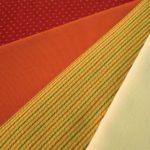Attainable sustainability: Going green has its business benefits
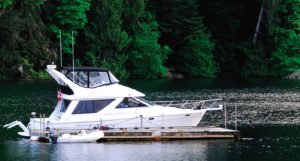 From magazine articles to seminars to trade show floors, the topic of sustainability has worked its way into the American business consciousness. As a result, companies are pioneering solutions that address the safety of the planet and the effects on people, while keeping the bottom line in mind. In the marine fabrication industry, interest in environmental initiatives has been tepid at best, but manufacturers and suppliers are laying out the business case for fabricators to “go green” by showcasing what they’ve been able to accomplish, and what lies ahead.
From magazine articles to seminars to trade show floors, the topic of sustainability has worked its way into the American business consciousness. As a result, companies are pioneering solutions that address the safety of the planet and the effects on people, while keeping the bottom line in mind. In the marine fabrication industry, interest in environmental initiatives has been tepid at best, but manufacturers and suppliers are laying out the business case for fabricators to “go green” by showcasing what they’ve been able to accomplish, and what lies ahead.
Industry leaders offer insights into the definition of sustainability, eco-friendliness in action, business benefits to fabricators and why it all matters.
Sustainability defined
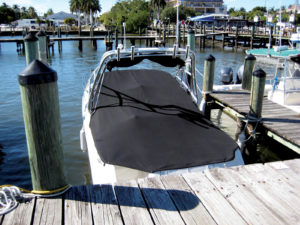
MarChem CFI has made great strides in creating more environmentally friendly production processes. The company’s products, such as Top Gun, Odyssey III and Top Notch, utilize water-based vs. solvent-based manufacturing processes. many leaders in the green movement believe solvent-based processes are detrimental to the environment and affect air quality.
Terms such as “green,” “eco-friendly,” and “sustainable” have all come to represent environmentally sound practices and initiatives. “Sustainability is being earth friendly, using products that have minimal impact on the environment, recycling, and retaining and minimizing waste in the production of our products,” explains Alan Prelutsky, vice president, sales and marketing for MarChem CFI in New Haven, Mo.
“True sustainability reaches through the entire supply chain,” adds John Pierce, product manager for WeatherMax, developed by Safety Components International in Greenville, S.C. “For textiles, that would be from fiber manufacture and finished fabric through fabrication and ultimately to the boat and the consumer. For optimal sustainability, the boater’s use should end at the beginning—recycling and starting the cycle again.”
For many companies, sustainability starts with the manufacturing processes. MarChem CFI, once one of the largest polluters in the state of Missouri, has painstakingly reformed its facilities to become more environmentally friendly. For starters, the manufacturer’s products, such as Top Gun, Odyssey III and Top Notch, utilize water-based vs. solvent-based manufacturing processes (the latter of which some consider detrimental to the environment). Using a proprietary filtration system, MarChem CFI recaptures all the coating that is not embedded into the fabric and reuses it. The company also offers its scrap product for sale on the secondary market, rather than throwing it away, and will repurpose trimmed edges as rope for internal usage.

Tri Vantage’s new Ultra Luxury Collection comprises three durable simulated-leather fabrics produced using environmentally conscious technology. They’ve void of environmental offenders, such as plasticizers, heavy metals and formaldehyde.
Recycling plays an imperative role for Glen Raven Custom Fabrics. The company’s Anderson, S.C., manufacturing center, where Sunbrella fabrics are produced, has become landfill free. “Every bit of waste, from fiber to light bulbs, is recycled,” says Derek Robinson, marine market manager for Glen Raven Custom Fabrics. The plant has launched its “Renaissance” program, which uses waste fibers in combination with new fibers to create a yarn used in the manufacture of furniture fabrics and indoor/outdoor rugs.
Rainier Industries in Seattle, Wash., has taken a similar approach to its offices and production facilities. Although Rainier has focused on environmental initiatives for the past six years, the biggest push came two years ago after CEO Scott Campbell went to China and witnessed poor management of natural resources. In 2008, the company reduced its solid waste by 60 percent. In the past, Rainier sent an average of 120 tons to the landfill each year. In addition, the company recycles all its cardboard—two-and-a-half tons per month—along with steel and aluminum. Rainier’s new production facility is 40 percent larger than its previous one, yet thanks to the building’s energy efficiency practices, utility costs have dropped by half. On the marine side, Rainier’s suppliers of polycarbonate and acrylic take back the excess product so they can reuse it.
An important criteria for Rainier’s green techniques is accountability. The company has launched an environmental management system and is seeking ISO 14001 certification, an international standard that establishes an organization as environmentally sustainable. The process comprises 11 key aspects, including employee commuting, vehicle fleet and supplier impact. Rainier has a clearly written sustainability strategy. “We’ve always felt that we did the right things, but now there are truly some measurements so we can say this is what we’ve done and this is how we do it,” says Buddy Sliva, business development manager for Rainier’s marine windows division.
Certification by an internationally recognized body is especially important in the budding green industry, since many companies will tout environmental benefits but have no way to back them up. Sattler NA in Melville, N.Y., has aligned itself with two important (and strict) European benchmarks that track eco-friendly practices. One is Oeko-Tex Standard 100, a testing and certification system that limits the use of harmful substances in textile production. The other is REACH, a regulation that aims to improve the protection of human health and the environment through better and early identification of chemical substances. Sattler’s European facility has ISO 14001 certification.
Sustainability also addresses a product’s longevity and performance—a necessity in the marine fabrication industry. Glen Raven Custom Fabrics has increased the warranty for its Sunbrella marine fabrics from five years to 10 years based on continuing performance improvements. “Whenever marine products provide reliable service for a decade or more, this level of performance certainly qualifies as sustainable,” Robinson notes.
Pierce agrees: “The ultimate in sustainability is products that last and do not need to be replaced as soon or as often.”
Green in action
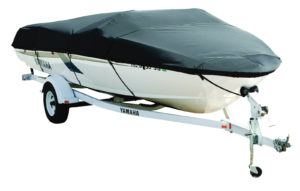
At the end of its life, WeatherMax from Safety Components is completely recyclable. The product is manufactured according to ISO 14001 guidelines, ensuring that an organization is environmentally sustainable.
Though the response to green practices from marine fabricators has only begun to surface, the lack of interest has not deterred manufacturers from making eco-friendly strides. Wearbest Sil-Tex Mills in Garfield, N.J., has developed Bella-Dura, the only fiber (synthetic or natural) that begins as a byproduct of petroleum waste that would be disposed of if not converted to fiber form. “The process uses very little energy and minimal amount of water to form the fibers, and very little water and energy are used overall in the weaving and manufacturing process,” explains Wearbest’s president Irwin Gasner, whose company has implemented a corporate “Go Green” management approach that focuses on safety of materials, water quality and conservation, energy usage, waste reduction and recycling, and social accountability. “There are no additive harsh chemicals necessary to provide the performance properties due to the inert and inherent characteristics of the Bella-Dura fiber.”
At the end of its natural life, Bella-Dura continues to be green. “As a marine fabric, Bella-Dura can be returned to the fiber producer where it will be re-extruded into black resin pellets that will go into agricultural or consumer products, such as the black CD case in your car,” Gasner notes.
Another environmentally sensitive textile new to the marine market is Tri Vantage’s Ultra Luxury Collection, three durable simulated-leather fabrics. The fabrics are produced using environmentally conscious technology; they’re void of plasticizers, heavy metals, formaldehyde, pyroxylin, Bisphenol and persistent organic pollutants (POPs).
-
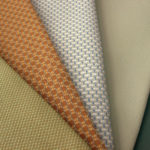
- Bella-Dura, produced by Wearbest Sil-Tex Mills, is the only natural or synthetic fiber that begins as a byproduct of petroleum waste that would be disposed of it not converted to fiber form. At the end of its natural life, Bella-Dura is re-extruded into black resin pellets that will then go into agricultural and consumer products.
WeatherMax from Safety Components is a completely recyclable material that’s manufactured to strict ISO 14001 standards, ensuring environmentally sound practices, such as recycling waste generated from producing the fabric. WeatherMax features what’s called a HydroMax finish instead of coatings that are considered harmful to the environment and users’ health.
Why go green?
Companies who initiate sustainable policies do so for a variety of reasons, and in return, they see a myriad of benefits. Perhaps the biggest one is a matter of simple economics. “We’re really trying to minimize the amount of stuff that goes to the landfill,” Prelutsky says. “We have to pay for hazardous waste disposal, so the more we can recycle and find other uses for, the cheaper it is for us to do our business.”
Pierce believes that in the long run, green products will prove to be economical. “As raw materials become scarcer and the cost of attaining those materials becomes more expensive, recycled raw materials will be a less-expensive alternative,” he says.
By offering products and services with an eco-friendly bent, Robinson suggests that fabricators can establish an even better rapport with their clients. “A sustainable product is a tremendous value that a marine fabricator can offer to customers with confidence,” he says. “Fabricators using sustainable products will have happy, long-term customers who become trusted referral sources. A fabricator who is known for offering sustainable, high-quality products is well positioned for above-average growth and profitability.”
A common thread that unites eco-friendly business practices, of course, is their altruistic nature. “We know it’s the right thing to do, period,” Sliva states. “We’re showing that this kind of strategy makes good business and environmental sense.”
Eco outlook
Manufacturers across all sorts of industries are making the case for going green, but doing so should not come at the expense of quality. Marine-related products need to be easily cleanable, clear, strong, perform well and last long. One big challenge facing the marine fabrication industry when it comes to going green is the nature of the business. Two materials used in the marine industry—polycarbonate and acrylic—involve a lot of chemicals to process them. Another obstacle: “There are limitations to what can be recycled, how to prepare it for recycling and how to get it to recycling,” Pierce says.
The concept of “sustainability” has difficulty standing on its own. “Sustainability, outside of niche markets, is not a selling point by itself,” Pierce notes. “It is a terrific additional benefit, provided the product performs as needed and fits into someone’s budget. The fabricator should sell the product on its merits and then add the ‘green’ benefits as additional value.”
Taking even small steps toward implementing environmental standards and initiatives will help in a world where “going green” is looking to be more of a lifestyle, rather than a trend or buzzword. “We’re poised for if and when this industry does want to move to a green and sustainable product portfolio,” Prelutsky notes.
Holly O’Dell is a Minnesota-based freelancer writer.
 TEXTILES.ORG
TEXTILES.ORG 


